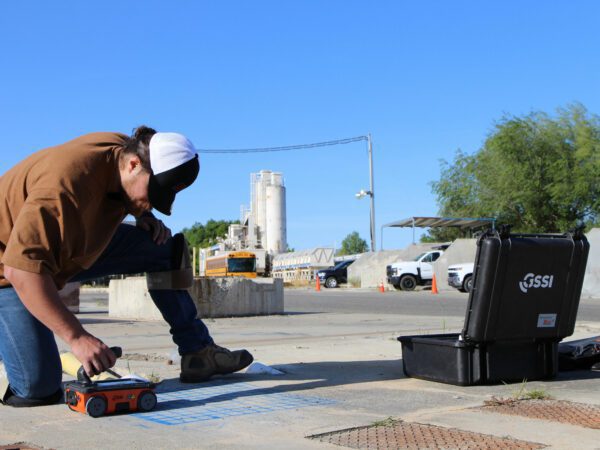Discover RainierGPR Service Areas Near You for Expert Concrete Scanning
Discover RainierGPR Service Areas Near You for Expert Concrete Scanning
Blog Article
Concrete Scanning: A Crucial Step Towards Ensuring Structural Stability and Safety And Security
In the world of building and construction and framework upkeep, the relevance of concrete scanning can not be overemphasized. By employing innovative technology and approaches, concrete scanning serves as a pivotal device in making sure that the stability and safety of bridges and structures are supported to the highest possible requirements.
Significance of Concrete Scanning
Concrete scanning plays an important duty in guaranteeing the architectural honesty and safety and security of buildings and framework jobs. By utilizing sophisticated modern technologies such as ground-penetrating radar (GPR) and electro-magnetic induction, experts can non-destructively inspect concrete frameworks to detect potential defects, voids, embedded objects, and reinforcement layout. This procedure allows early discovery of abnormalities that can compromise the stability of a structure, protecting against costly damages and making certain the security of occupants.
Concrete scanning is particularly necessary during the planning and building stages of a task. Before drilling, reducing, or coring right into concrete, scanning aids determine the precise places of rebar, post-tension wires, and various other embedded components, lowering the danger of accidental hits that might lead to structural weak points. Furthermore, concrete scanning aids in high quality control by verifying the density of concrete covers and spotting any kind of disparities that might influence the general durability of the structure. Ultimately, investing in concrete scanning solutions is not only an aggressive action to alleviate risks yet additionally a basic action towards preserving the long-term safety and security and security of structures and infrastructure.
Innovation for Concrete Evaluation

Benefits of Early Detection
Prompt detection of structural concerns can significantly reduce risks and make certain the long life of building jobs. By identifying prospective problems early in the building and construction process, stakeholders can take positive actions to attend to concerns before they intensify right into larger and extra expensive troubles. Among the key advantages of early discovery is the prevention of architectural failures, which can pose severe safety threats and result in task delays and monetary losses.
In addition, early discovery permits timely repair work and upkeep, which can help prolong the life expectancy of the structure. By addressing problems immediately, building and construction teams can prevent pricey fixings these details or perhaps the demand for early replacement of structural components. This proactive method not only conserves time and money however likewise improves the total safety and sturdiness of the building and construction job.
In addition, very early discovery can enhance job planning and decision-making by providing stakeholders with useful insights into the problem of the structure. Armed with this details, job managers can make informed options pertaining to building materials, timelines, and approaches, leading to extra reliable and successful task results.
Guaranteeing Architectural Security
Making sure the architectural stability of a construction job is vital to its security and long life. Structural stability describes the ability of a building or framework to keep its kind and feature under different tons and environmental conditions. To accomplish this, comprehensive assessment and monitoring of the framework are vital. Concrete scanning plays an essential function in ensuring structural security by detecting potential issues such as voids, delamination, or reinforcement corrosion that might endanger the integrity of the structure gradually.
By making use of innovative scanning modern technologies like ground-penetrating radar (GPR) and electro-magnetic induction, building professionals can non-invasively examine concrete frameworks to determine areas of issue below the surface area. This positive approach permits the early detection of flaws or weak points, enabling prompt repair work or support to stop architectural failings.
Routine concrete scanning during different building phases and throughout the life cycle of a structure can help keep its security, mitigate threats, and make sure the safety and security of owners. By prioritizing architectural security via concrete scanning, building and construction tasks can improve their strength and durability, inevitably adding to better safety and longevity.
Preventing Crucial Failures
To safeguard versus devastating events, meticulous surveillance and aggressive upkeep are crucial in averting crucial failures within structural structures. Detecting possible concerns prior to they escalate is key to protecting against architectural failings. Carrying out regular examinations, such as concrete scanning, can expose hidden problems like gaps, splits, or deterioration that might endanger the integrity of a structure. By utilizing innovative scanning modern technologies like Ground Penetrating Radar (GPR) or Concrete X-ray, engineers can non-destructively analyze the problem of concrete and identify Discover More Here weak points that require reinforcement or repair service - RainierGPR Service Areas.

Conclusion
Finally, concrete scanning plays an essential role in making sure structural integrity and security by using advanced technology for early discovery of potential problems. This aggressive technique helps protect against important failures and guarantees the stability of structures. It is essential to prioritize concrete evaluation as a standard method to secure the long life and safety and security of structures and facilities.
Concrete scanning plays a crucial function in ensuring the structural stability and security of structures and infrastructure projects. In addition, concrete scanning aids in top quality control by validating the density of concrete covers and spotting any type of disparities that might affect the general resilience of the structure. Concrete scanning plays a vital duty in making sure architectural security by discovering prospective problems such as spaces, delamination, or reinforcement deterioration that could endanger the integrity of find the structure over time.

In verdict, concrete scanning plays a critical duty in guaranteeing structural honesty and safety and security by making use of advanced innovation for very early discovery of possible concerns.
Report this page